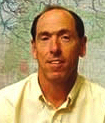Aug. 18-Sept. 13: Faculty ceramics at Museum of Art

A retrospective of ceramic works by retired fine arts faculty member Ann Christenson will be on exhibit Aug. 18-Sept. 13 at the Museum of Art at WSU Pullman. An opening reception will be at 6 p.m. Thursday, Aug. 28, in the museum gallery with a talk by the artist at 7 p.m. Admission to the museum is free.
Since 2004, the museum has presented works by fine arts faculty members, alternating large group shows with exhibits showcasing individual artists.
Christenson’s work often resembles a confluence of juxtapositions: organic yet geometric, industrial yet primeval, intimate yet worldly and awkward yet elegant. She draws influences from her cross-cultural experiences, her domestic environment, the historical diversity of ceramic art and the natural world in order to explore space and material.




